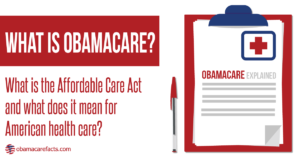
Business Insider- Feb. 15, 2017, 9:54 AM- Bob Bryan
The Centers for Medicare and Medicaid Services on Wednesday morning announced new proposed rules for the Affordable Care Act’s individual insurance exchanges.
The proposals from CMS include several changes to enrollment periods and timelines for insurers in an attempt at “stabilizing the individual and small group health insurance markets,” according to a press release.
The proposed changes would be the first administrative tweaks to the law, also known as Obamacare, under President Donald Trump’s administration. They contain a combination of long-considered ideas and serious departures from the previous administration.
Perhaps the two most striking proposed changes are cutting in half the exchanges’ 2018 open enrollment period and lowering minimum standards for care to qualify for the exchanges.
The CMS proposes an open enrollment period — during which people without health insurance through their employer or Medicaid/Medicare can sign up for coverage — from November 1 to December 15, 2017. Open enrollment periods have been three months, from November 1 to January 31.
Additionally, the rules would lower the “de minimis range used for determining the level of coverage,” according to the release. Essentially, the ACA established minimum standards for coverage (here’s a full breakdown from CMS) in order to be certified on the bronze, silver, and gold plan levels. The new rule would allow insurers to cover slightly fewer areas of health and still be at a certain metal level.
The CMS projects the rules would result in increased out-of-pocket costs for Americans in the short term but that lower premiums would offset this in the long run.
“The proposed change in [actuarial value] could reduce the value of coverage for consumers, which could lead to more consumers facing increases in out-of-pocket expenses, thus increasing their exposure to financial risks associated with high medical costs,” the proposal says. “However, in the longer run, providing issuers with additional flexibility could help stabilize premiums, increase issuer participation and ultimately provide some offsetting benefit to consumers.”
Patrick Conway, the acting CMS administrator, said: “This proposal will take steps to stabilize the marketplace, provide more flexibility to states and insurers, and give patients access to more coverage options. They will help protect Americans enrolled in the individual and small group health insurance markets while future reforms are being debated.”
Here’s a quick rundown of some of the other proposed changes:
Give insurers more time to figure out their 2018 plans. Insurers have expressed concerns about the uncertainty regarding the repeal and replacement of the ACA planned by Republicans. This uncertainty, coupled with enrollment data, has already led one of the largest insurers — Humana — to announce plans to leave the market. Others are considering their offerings. Insurers must submit 2018 plans to the federal and state governments in April. The proposal says that if the other changes are accepted, CMS would issue “separate guidance” on the deadline for insurers.
Increase scrutiny during special enrollment periods. The rules would force people who enroll outside of the open enrollment period to provide additional documentation to be allowed access to coverage. It would allow people who lose employer coverage because of a job status change to gain access, and it would prevent people from waiting until they get sick to sign up for a plan. This has long been an idea to prevent abuse of the special enrollment periods; the Obama administration had proposed something similar.
Force beneficiaries to pay back owed premiums before getting the next year’s coverage. The rules would allow insurers to “to collect premiums for prior unpaid coverage” before the person can sign up for a plan from the same insurer for the next year.
Some of these changes were proposed by the Obama administration in August to address the imbalance in the exchanges.
The open-enrollment tweak may be the most significant departure from the Obama era, however. The CMS rules proposed in August tried to expand outreach and sign-ups for the open enrollment period, allocating more money toward advertising efforts. Trump’s team pulled back from a good portion of a $5 million ad buy for the 2017 open enrollment period.
A shortened open enrollment period could also make it much more difficult to increase sign-ups or keep the number of people enrolled at the same level in 2018. The number of people who signed up during the open enrollment period fell in 2017 from the year before, mostly because of a significant deceleration in sign-ups after Trump took office.
The new proposed rules drew some criticism from health-policy experts. Larry Levitt, a senior vice president at the health-policy think tank Kaiser Family Foundation, tweeted that the rules “strike me as making things less consumer friendly and more insurer friendly.”
The proposed changes are open for public comment until March 7, according to filings with the Federal Register.
Questions about Obamacare and reimbursement? Physician Credentialing and Revalidation ? or other changes in Medicare, Commercial Insurance, and Medicaid billing, credentialing and payments? Call the Firm Services at 512-243-6844

